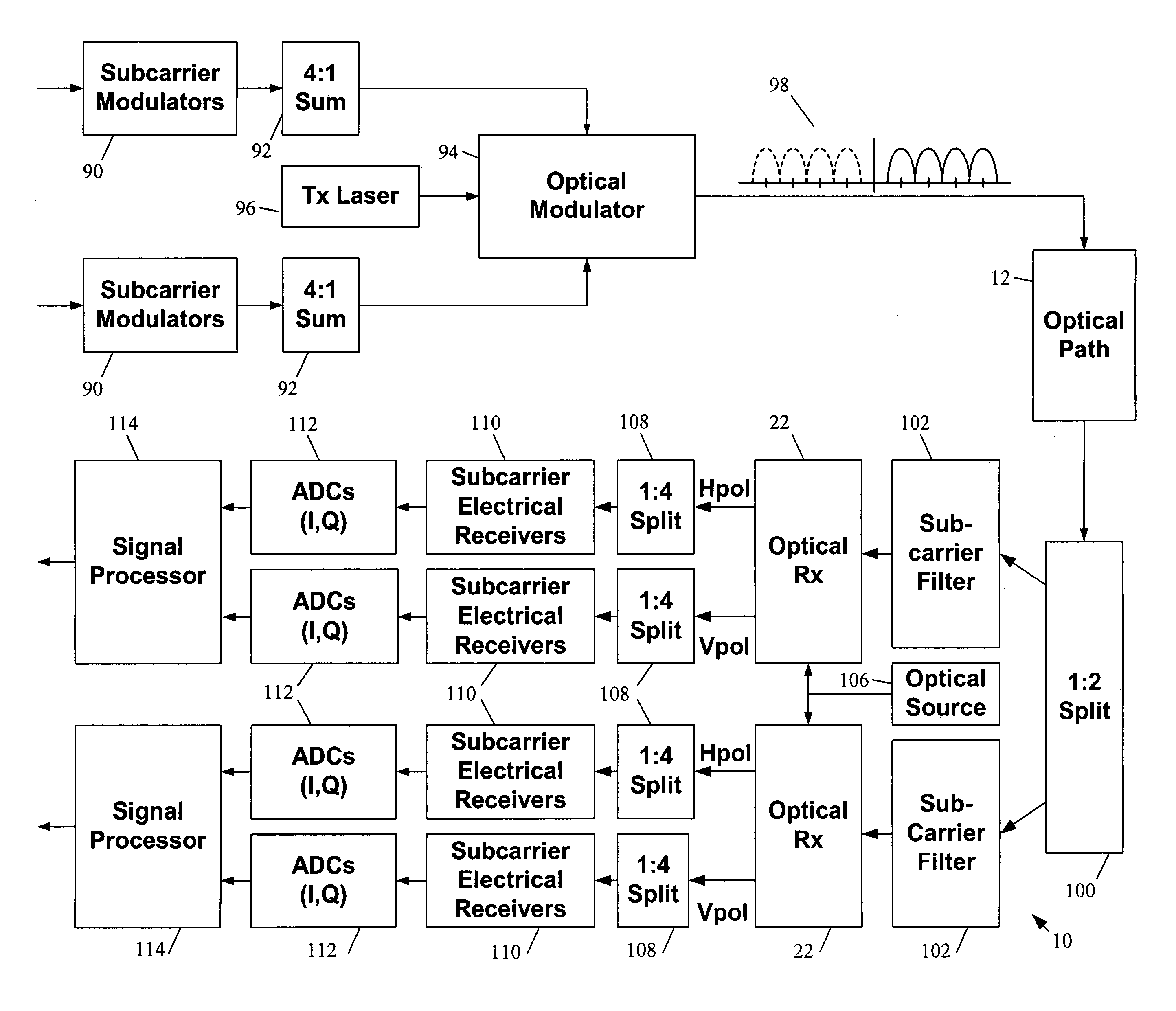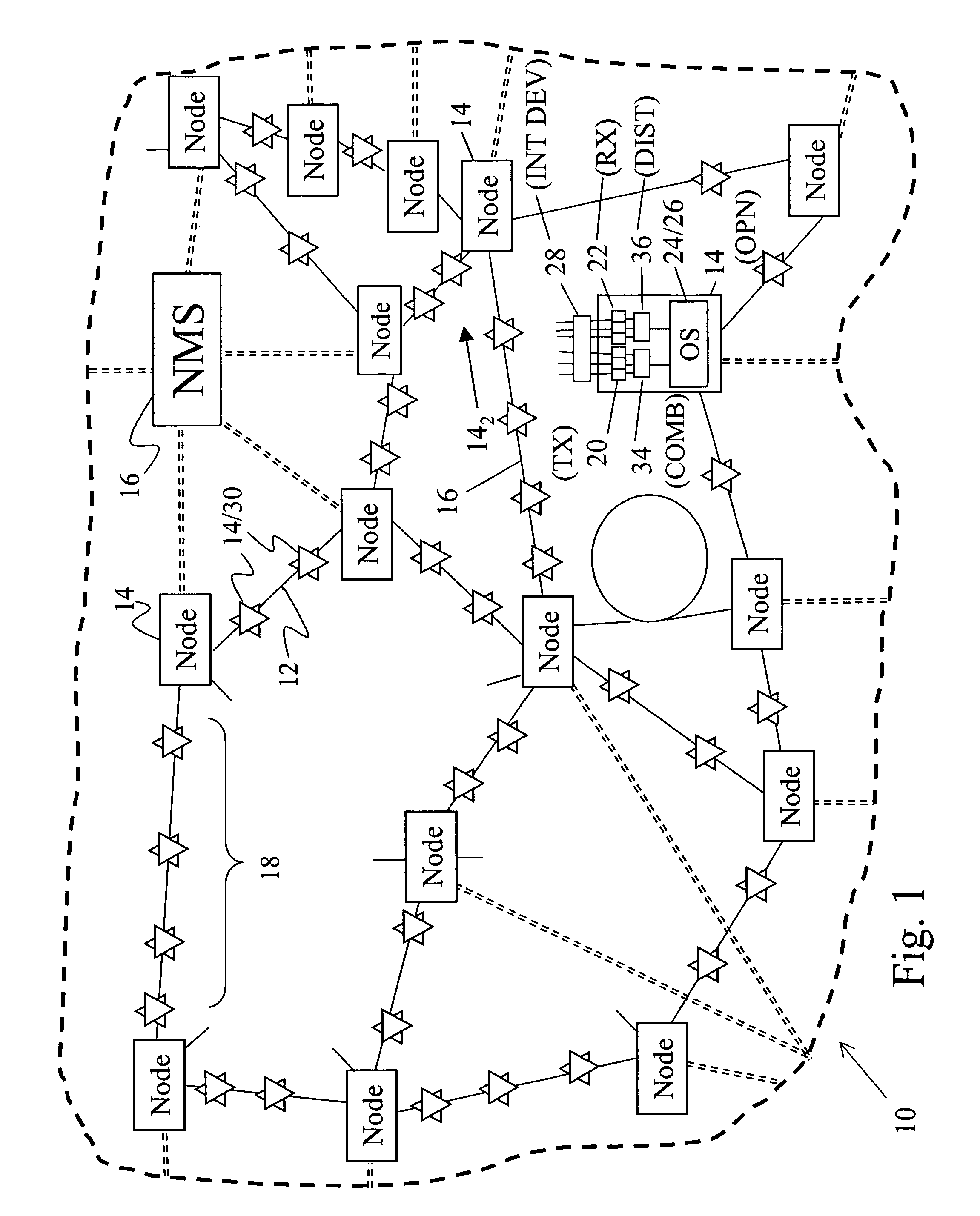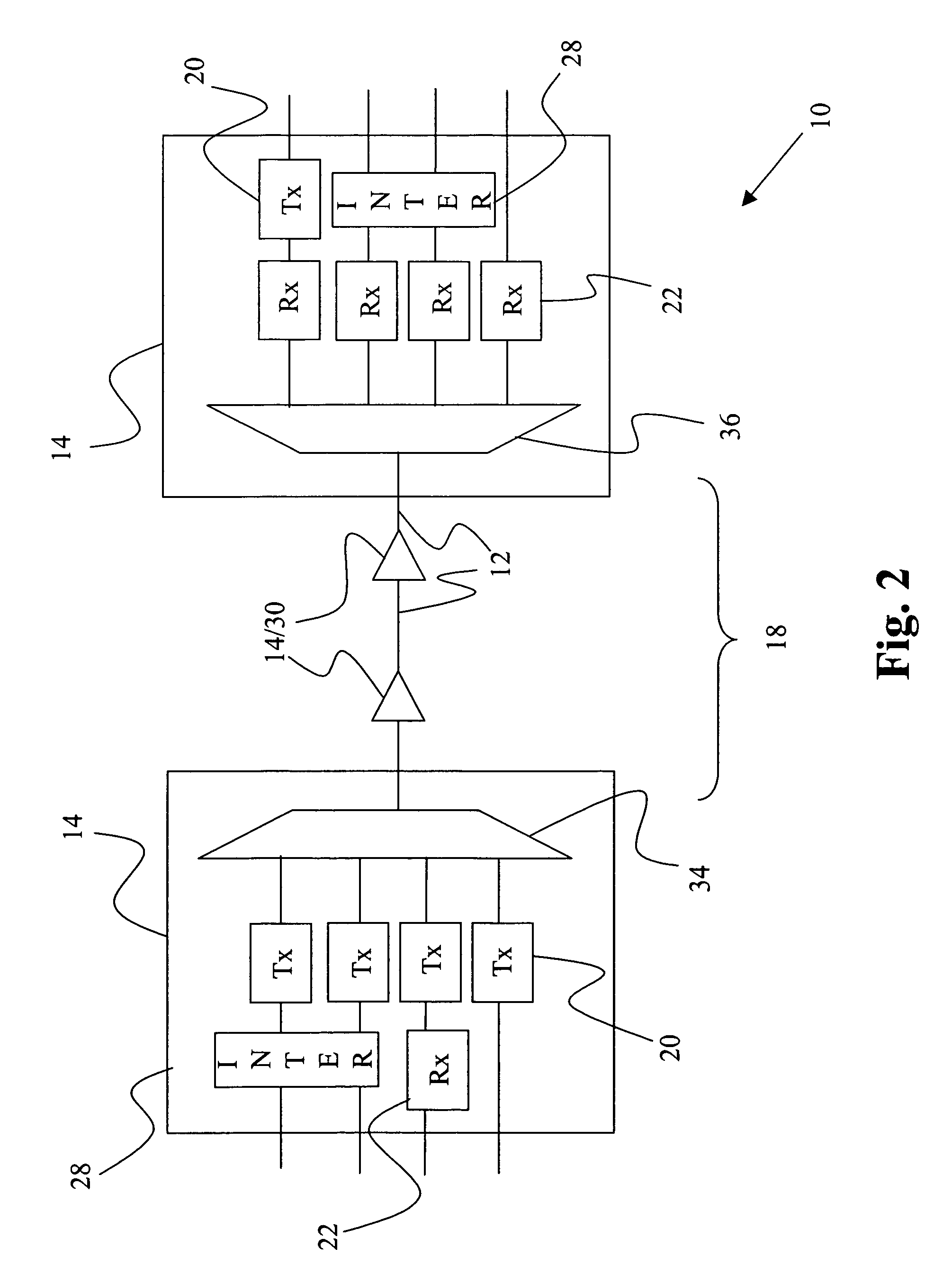Optical communications systems, devices, and methods
a technology of optical communication system and optical transmission channel, applied in the direction of multi-channel communication, digital transmission, electromagnetic transmission, etc., can solve the problems of limiting data transmission rate and distance, increasing system cost, and signal degrading
- Summary
- Abstract
- Description
- Claims
- Application Information
AI Technical Summary
Benefits of technology
Problems solved by technology
Method used
Image
Examples
Embodiment Construction
[0068]FIG. 1 illustrates an optical communications system 10 which includes optical paths 12 connecting nodes and network elements 14. Advantages of the present invention can be realized with many system 10 configurations and architectures, such as an all optical network, one or more point to point links, one or more rings, a mesh, other architectures, or combinations of architectures. The system 10 illustrated in FIG. 1 is a multi-dimensional network, which can be implemented, for example, as an all optical mesh network, as a collection of point to point links, or as a combination of architectures. The system 10 can employ various signal formats, and can also convert between formats. The system 10 can also include more or less features than those illustrated herein, such as by including or deleting a network management system (“NMS”) 16 and changing the number, location, content, configuration, and connection of nodes 14.
[0069]The optical paths 12 can include guided and unguided tr...
PUM
 Login to View More
Login to View More Abstract
Description
Claims
Application Information
 Login to View More
Login to View More - R&D
- Intellectual Property
- Life Sciences
- Materials
- Tech Scout
- Unparalleled Data Quality
- Higher Quality Content
- 60% Fewer Hallucinations
Browse by: Latest US Patents, China's latest patents, Technical Efficacy Thesaurus, Application Domain, Technology Topic, Popular Technical Reports.
© 2025 PatSnap. All rights reserved.Legal|Privacy policy|Modern Slavery Act Transparency Statement|Sitemap|About US| Contact US: help@patsnap.com



